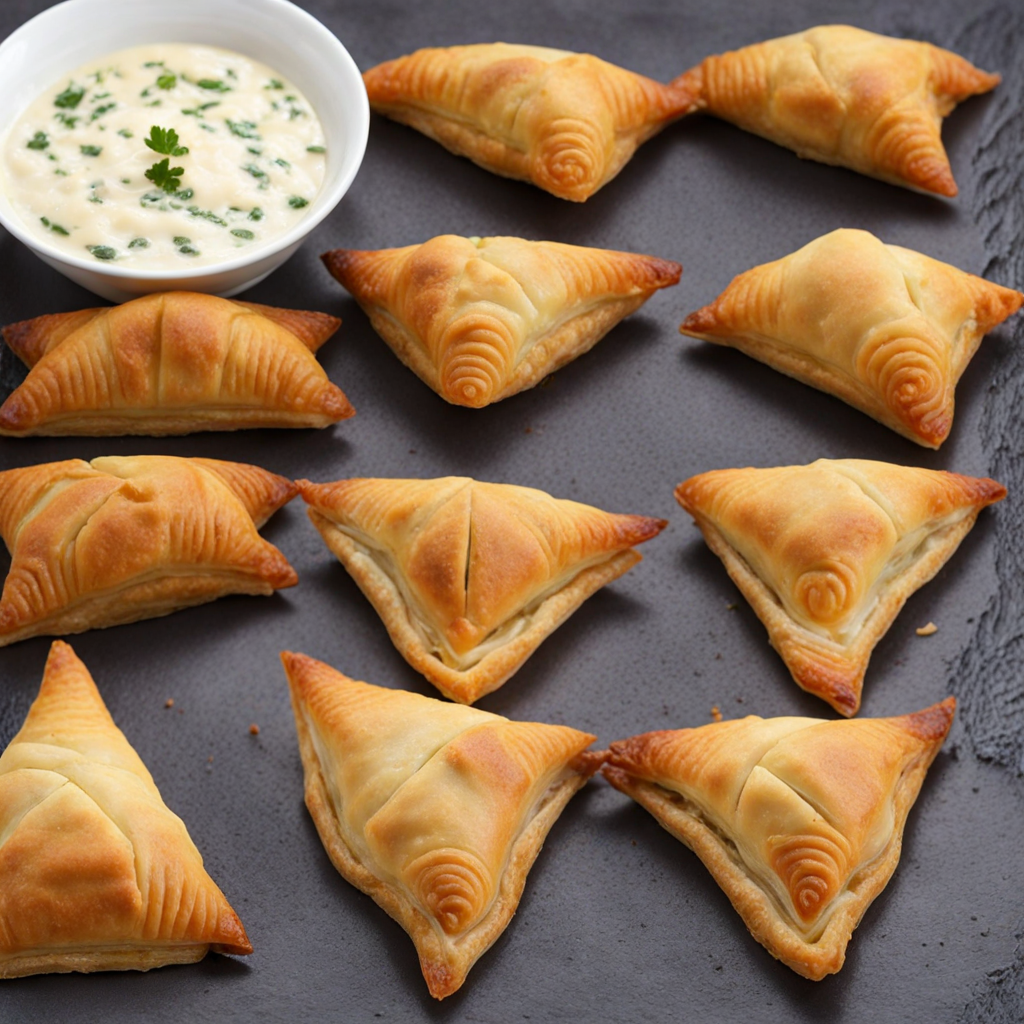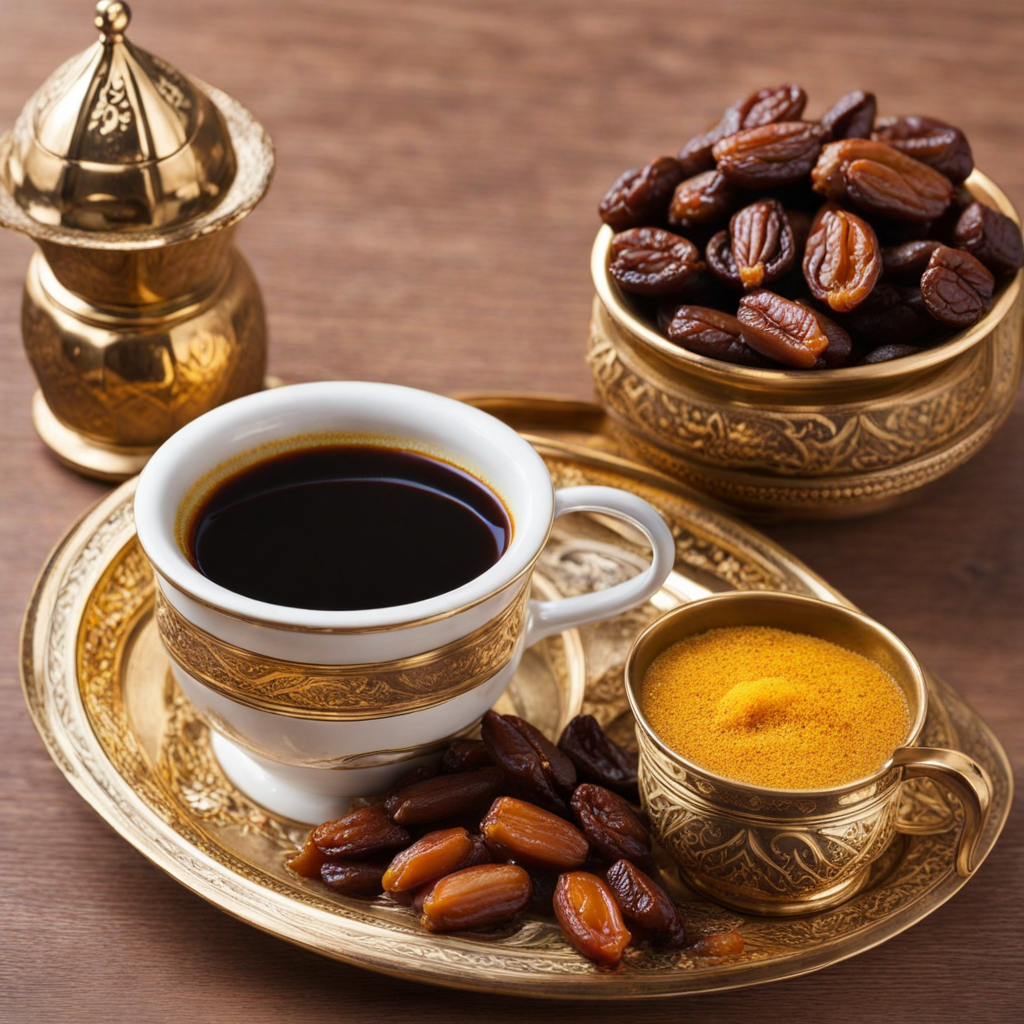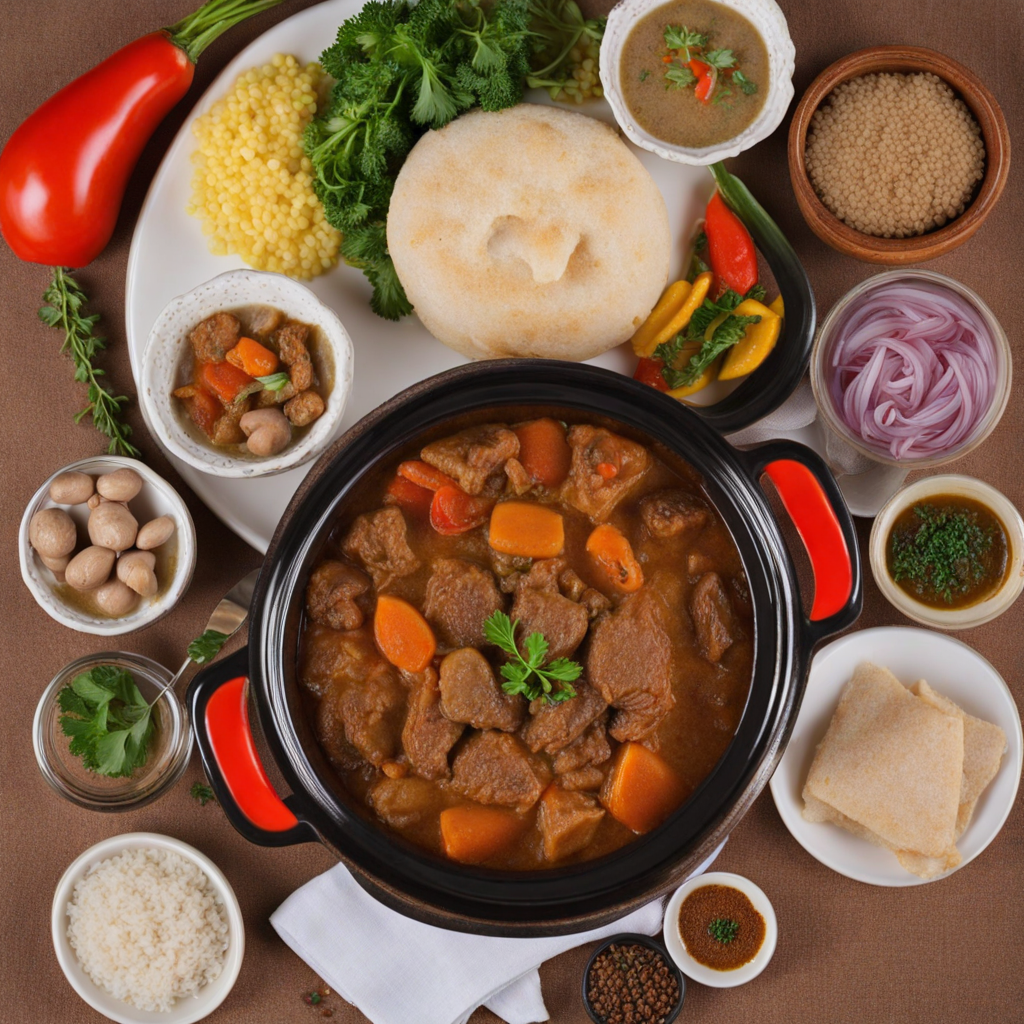Samboosa
Samboosa, a delightful pastry originating from the United Arab Emirates, is a beloved treat that combines crispy texture with a savory filling. Traditionally shaped like a triangle, these golden-brown parcels are made from thin dough that is expertly folded and filled with a variety of ingredients. The outer layer is fried to perfection, resulting in a crunchy exterior that contrasts beautifully with the warm, flavorful filling inside. The aroma of freshly fried samboosa wafts through the air, enticing anyone nearby to indulge in this popular snack. The fillings of samboosa can vary widely, showcasing the culinary diversity of the region. Common ingredients include spiced potatoes, minced meat, lentils, and a medley of vegetables, often seasoned with aromatic spices such as cumin, coriander, and turmeric. Each bite reveals a burst of flavors, with the spices harmonizing to create a comforting and satisfying experience. Vegetarian options are also widely available, making samboosa an inclusive choice for all palates. The versatility of the filling allows for endless variations, making it a dish that can be enjoyed time and again without growing stale. Samboosa is often served during festive occasions, family gatherings, and iftar during Ramadan, where it holds a special place on the table. It is typically accompanied by dipping sauces, such as tangy tamarind or spicy chili sauce, which enhance the overall taste experience. Whether enjoyed as a street food snack or as part of a larger meal, samboosa offers a unique taste of Emirati culture, inviting food lovers to explore its rich flavors and enjoy the communal joy of sharing this delectable dish.
How It Became This Dish
The History of سمبوسة (Samboosa) in the United Arab Emirates The سمبوسة, or samboosa, is a beloved culinary delight that has woven itself into the cultural tapestry of the United Arab Emirates (UAE) and the broader Middle Eastern and South Asian regions. This savory pastry, typically filled with a mixture of spiced meats, vegetables, or lentils, has a rich history that reflects the movement of peoples, trade, and the blending of culinary traditions. Origins of Samboosa The origins of the samboosa can be traced back to ancient civilizations in the Middle East and South Asia. Its earliest ancestors may be linked to the Persian dish known as "sambusak," which is thought to have emerged around the 10th century. The word "sambusak" is derived from the Arabic word "sambusaj," which itself may have roots in the Greek word "sambousakion." These connections suggest a long history of culinary exchange along trade routes, particularly the Silk Road, where merchants, travelers, and nomadic tribes would share their food traditions. As the samboosa traveled across regions, it adapted to local tastes and ingredients. In the Arabian Peninsula, the dish evolved into the form we recognize today, often filled with spiced meat—beef, chicken, or lamb—alongside onions, herbs, and spices that reflect the vibrant flavors of Emirati cuisine. The use of spices such as cumin, coriander, and turmeric not only adds flavor but also showcases the historical spice trade that has long been a part of the UAE's identity. Cultural Significance In the United Arab Emirates, the samboosa is much more than just a snack; it is an integral part of social gatherings, festive occasions, and daily life. The practice of making and sharing samboosa is often a communal activity, especially during Ramadan. As the holy month of fasting approaches, families prepare large quantities of samboosa to break their fast each evening. The process of preparing the pastry, whether by hand-rolling the dough or assembling the fillings, fosters a sense of togetherness and tradition. Samboosa has also become a symbol of hospitality in Emirati culture. It is common to serve samboosa to guests during gatherings, celebrations, and even casual visits. The pastry's bite-sized nature makes it an ideal finger food for social occasions, allowing people to mingle and enjoy conversation while savoring the delicious flavors. The act of offering samboosa to guests signifies warmth and generosity, reinforcing the cultural value of hospitality that is deeply ingrained in Emirati society. Development Over Time As the UAE has evolved, so too has the samboosa. With the discovery of oil in the mid-20th century and the subsequent economic boom, the country experienced significant cultural and demographic changes. The influx of expatriates from different regions, particularly from South Asia and the Levant, introduced new variations and ingredients to the traditional samboosa. In contemporary Emirati cuisine, samboosa can be found filled with a diverse array of ingredients, reflecting the multicultural society of the UAE. While traditional fillings such as spiced lamb or chicken remain popular, modern adaptations may include vegetarian options, such as spiced potatoes, cheese, or even fusion flavors that incorporate local and international influences. This versatility has allowed the samboosa to thrive in various culinary contexts, from street food stalls to upscale restaurants. Moreover, the preparation techniques of samboosa have also evolved. While traditionally deep-fried, many contemporary cooks are opting for healthier methods, such as baking or air-frying, to cater to changing dietary preferences. These adaptations have helped keep the samboosa relevant in a world increasingly focused on health and wellness without sacrificing the rich flavors that define this beloved dish. Samboosa in Contemporary Culture Today, samboosa is not only a staple of Emirati cuisine but also a symbol of cultural identity that resonates with both Emiratis and the diverse expatriate population. Food festivals, cultural events, and food competitions often feature samboosa, showcasing its importance in the culinary landscape. The UAE's Food Festival, for example, celebrates local and international cuisine, highlighting the samboosa as a dish that brings people together. Social media has also played a role in popularizing samboosa. Food bloggers and influencers share their favorite recipes, variations, and stories behind this iconic dish, further embedding samboosa into the modern food narrative of the UAE. The visual appeal of samboosa, with its golden-brown crust and enticing fillings, lends itself well to the Instagram generation, allowing it to reach a broader audience beyond traditional settings. Conclusion In conclusion, the samboosa is a remarkable reflection of the rich culinary history and cultural significance of the United Arab Emirates. From its ancient origins to its modern adaptations, the samboosa embodies the spirit of hospitality, community, and cultural exchange that defines Emirati life. As it continues to evolve and adapt, this savory pastry remains a cherished part of the nation’s identity, symbolizing the interconnectedness of food, culture, and tradition in a rapidly changing world. Whether enjoyed during Ramadan, at family gatherings, or as a simple street food snack, the samboosa stands as a testament to the enduring power of food to bring people together across generations and cultures.
You may like
Discover local flavors from United Arab Emirates







